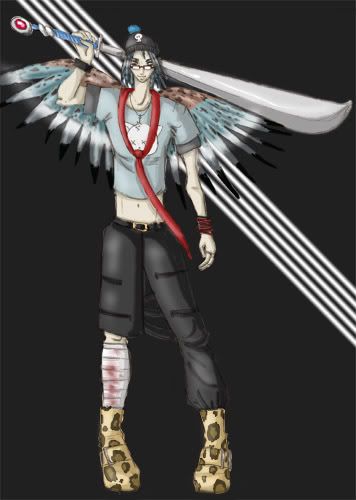Fact Sheet
KestrelFrom Wikipedia (substantial cuts made)
American kestrels are the smallest falcon in North America. These tiny, seemingly fearless birds are brightly adorned with reddish, blue and cinnamon colors. Both sexes have reddish and blue crowns. Males have blue wings and cinnamon or rusty backs and tails. The breast is white with dark spots. Females have a cinnamon body color with dark streaks. the breast is a lighter tan color with vertical brown streaks.
As with all raptors the females are larger than males, however the difference is slight. Lengths average 10 inches (25 cm) for females and nine inches (24 cm) for males. Wingspans average 22 inches (57 cm) for females and 21 inches (55 cm) for males. Weights average 0.3 pounds (5 oz. or 120 gm) for females and 0.2 pounds (3.5 oz. or 111 gm) for males.
American Kestrels are found in a variety of habitats including parks, suburbs, open fields, forest edges and openings, alpine zones, grasslands, marshes, open areas on mountainsides, prairies, plains, deserts with giant cacti, and freeway & highway corridors.
The American kestrel is the only North American falcon to habitually hover with rapid wing beats, keeping its head motionless while scanning the ground for prey. The kestrel commonly perches along fences and powerlines. It glides with flat wings and wingtips curved upward. It occasionally soars in circles with its tail spread and its wings flat.
In summer, kestrels feed largely on grasshoppers, dragonflies, lizards, mice, and voles. They will also eat other small birds. Wintering birds feed primarily on rodents and birds. The birds characteristically hunt along roadsides from telephone wires, fence posts, trees or other convenient perches when not actually flying in search of food. When they are flying and looking for food they frequently hover with rapid wingbeats.
ViolenceFrom Wikipedia
Violence refers to acts �typically connotative with aggressive and criminal behaviour �which intend to cause or is causing of injury to persons, animals, or (in limited cases) property. Harm to non-human animals may be considered violence, though this depends on the social mores related to animal cruelty, and the situational context in which such acts take place. The concept of violence can also be extended to any abuse, usually depending on severity. Damage to property is typically considered minor relative to violence against persons.
Violence falls into essentially two forms �random violence, which includes unpremeditated or small-scale violence, and coordinated violence, which includes actions carried out by sanctioned or unsanctioned violent groups �as in warfare (ie. inter-societal violence) and terrorism. Since the Industrial Revolution, the lethality of modern warfare has steadily grown to levels considered universally dangerous. As a practical matter, warfare on a massive scale is considered to be a direct threat to the prosperity and survival of individuals, cultures, societies, and the world's living populations.
In specific regard to warfare, journalism, because of its increasing capability, has served to make matters of violence which were once in the domain of the military into moral matters within the domain of the society at large. Transculturation, due to modern technology, has served to diminish the moral relativism typically associated with nationalism, and in this general context a international "nonviolence" movement has gained in social promience.

